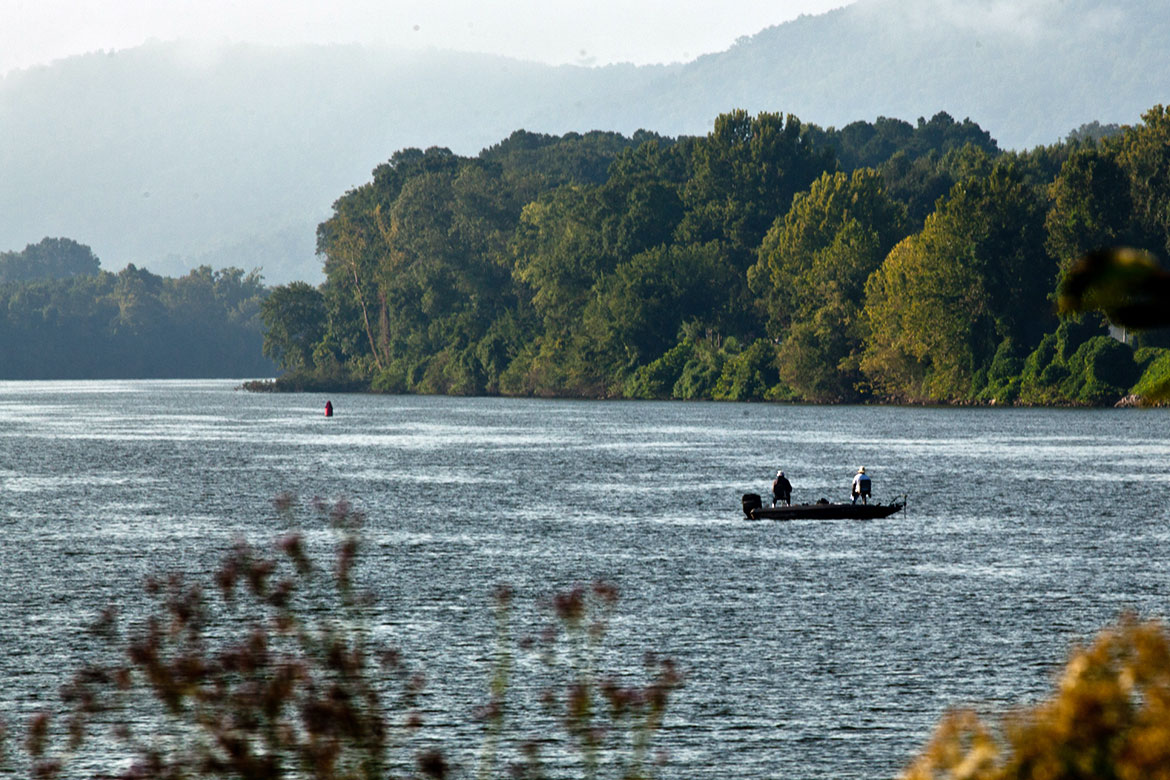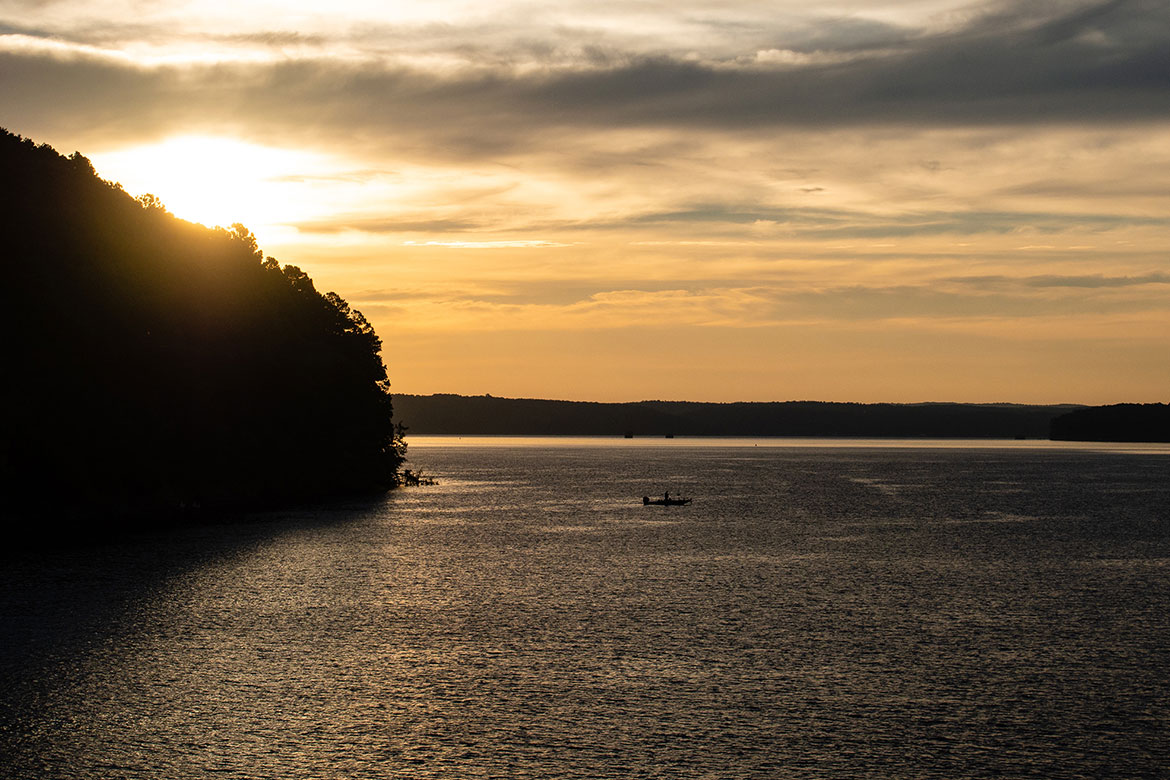Growing up in Clifton, in the western part of Tennessee, Georgia Morris lived right on the Tennessee River. Life in her community centered around the water.
“Growing up in one of the smallest towns in the state, the river was all we had,” Morris says. Her ties to the river and a river community made the Tennessee RiverLine initiative immediately appealing.
“After hearing of this program my first year of college, I had the sense that I wanted to be part of it in some way so I could potentially bring back to my community what it provided me: a great relationship with nature and the water,” Morris says. “Between my lifelong connection to the Tennessee River as well as being a student in the landscape architecture program at UT, this project really hits close to home, which is what made me want to be involved.”
Now a fifth-year student working toward a bachelor’s degree in architecture and a master’s degree in landscape architecture, Morris says she is excited to work as an intern with this transformative initiative, which will connect communities to the waterway via a 652-mile continuous system of paddling, hiking, and biking trails. She creates graphics for the project, working on reports, guides, flyers, postcards, photo shoots, and other essential elements.
In October of last year, the Tennessee RiverLine announced that Clifton had been chosen as one of 15 communities invited to enroll in the Tennessee RiverTowns Program. Morris says she can’t wait to see the impact the Tennessee RiverLine has on her hometown.
“Unfortunately, the spaces along the river were not necessarily developed in a proactive way, so I am excited to see how the Tennessee RiverLine gets people in my hometown more active on the water together,” she says.
 Caleb Brackney, a third-year student working toward dual master’s degrees in architecture and landscape architecture, first learned of the Tennessee RiverLine in the Tennessee River Studio, a semester-long class that introduced the initiative’s vision and engaged students in its further development as a creative concept. “I wanted to get involved because I have always had a desire to bring people together through good design, collaborative planning, and experienced leadership,” Brackney says. “With Brad Collett [the director of the initiative and an associate professor in the Department of Plant Sciences and in the School of Landscape Architecture] at the helm, I knew this project would be a success.”
Caleb Brackney, a third-year student working toward dual master’s degrees in architecture and landscape architecture, first learned of the Tennessee RiverLine in the Tennessee River Studio, a semester-long class that introduced the initiative’s vision and engaged students in its further development as a creative concept. “I wanted to get involved because I have always had a desire to bring people together through good design, collaborative planning, and experienced leadership,” Brackney says. “With Brad Collett [the director of the initiative and an associate professor in the Department of Plant Sciences and in the School of Landscape Architecture] at the helm, I knew this project would be a success.”
As part of his role as a graduate assistant, Brackney collaborated with a team of UT civil engineering students in their capstone project addressing riverbank stabilization. He also helped fabricate materials and supplies for river excursion and award purposes, participated in network events on the river to share enthusiasm for the regional initiative, and assisted in developing the Tennessee RiverTowns Program.
Brackney says the Tennessee RiverLine has changed him more than any other part of his graduate education at UT. “Having the privilege of joining a team of talented, motivated, and genuine people inspires me and reminds me of the impact landscape architecture has on the world,” he says. “Surrounding yourself with people you look up to is the fastest track to success, and the Tennessee RiverLine places me in that position daily.”
Brackney has also learned the value of teamwork in enacting change. “I am continually impressed with the coordination and positive collaboration that takes place daily, which results in a better understanding of each other, our environment, and the impact we will have on future generations by creating a regional network of informed individuals with unparalleled access to the most important resources we have in our backyards.”
 For Kari Essary, who graduated in May with a bachelor’s degree in architecture and is working on a master’s degree in landscape architecture, working with the Tennessee RiverLine reaffirmed her career goals. “My internship showed me that designers can offer a unique perspective on these kinds of projects,” she says.
For Kari Essary, who graduated in May with a bachelor’s degree in architecture and is working on a master’s degree in landscape architecture, working with the Tennessee RiverLine reaffirmed her career goals. “My internship showed me that designers can offer a unique perspective on these kinds of projects,” she says.
Essary’s work included contributing to the Tennessee RiverLine’s annual report and handling logistics for the annual summit—a convening of partners from around the region who believe in the vision for this initiative. She says her work with the project taught her that “only a small group of individuals is required to kickstart positive change before the community realizes the potential of such an initiative.”
Essary finds it inspiring to hear about similar creative plans because they start at such a small, personal scale. “This project, for instance, started as a student design concept in the Tennessee River Studio and has since become a partnership that is advocating for greater recreation and investment opportunities on a regional scale,” she says.
Kinsey Simmerman, a second-year Master of Landscape Architecture student, loved the idea of giving back to her community and participating in a hands-on way. “Community-driven work is something I ultimately want to do in my future career,” Simmerman says. “I really appreciate that the Tennessee RiverLine is about community.”
As part of the initiative, Simmerman looked for irregularities along the river, particularly as they pertained to the history of urban renewal in Knoxville.
She says that because of the Tennessee RiverLine, she has realized that a natural landscape can be tied to a community. “I have always thought about the river as solely recreational, but that’s not it,” Simmerman says. “The river has so much history in being the heartbeat of a community.”
The Tennessee RiverLine brings together both the natural world and physical communities, and it has UT students to thank for much of its productivity and success.

—
Photos courtesy of Tennessee RiverLine

